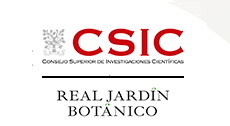Scientific Area
Phyto-nutrient profiling of two Amaranth species grown under the Organic Medium Enclosed Trough system
ID: 613 / 438
Category: Abstract
Track: Pending
Proposed Symposium Title: Phyto-nutrient profiling of two Amaranth species grown under the Organic Medium Enclosed Trough system
Authors:
Maeleletse G. Mopai, Semakaleng Mpai, Ashwell R. Ndhlala
Affiliations: University of Limpopo, Limpopo Province, South Africa
Abstract:
A




